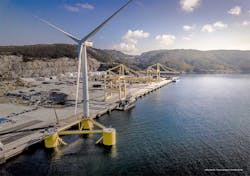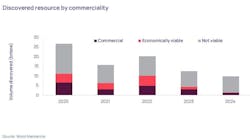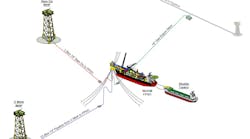Offshore staff
LISBON, Portugal – ABS has classed what it claims is the world’s largest floating wind turbine, the WindFloat Atlantic.
This is the first of three ABS-classed, semisubmersible type units designed by Principle Power that house 8.4-MW MHI Vestas turbines. It is about to be installed 20 km (12 mi) offshore Viana do Castelo, Portugal.
The 25-MW WindFloat Atlantic project is continental Europe’s first larger scale floating wind farm, and is scheduled to go online at the end of 2019.
Christopher J. Wiernicki, ABS Chairman, president, and CEO, said: “Floating turbines enable us to reach offshore wind resources in water that is too deep for conventional bottom-fixed turbines. It is breakthroughs such as this that will make a vital contribution to the global transition to clean energy.”
The project is developed by the Windplus consortium, which is jointly owned by EDP Renováveis, ENGIE, Repsol, and Principle Power Inc. The development is based on the same principles as the original Principle Power-designed concept, WindFloat 1, that was installed offshore Portugal in 2011.
Steven Barras, chief technical officer at Principle Power, said: “WindFloat Atlantic represents a major milestone for the floating offshore wind industry as it is the world’s first semisubmersible floating wind farm.”
Thanks to their floating foundations, floating offshore wind farms are not subject to the same depth restrictions as fixed structures and can be at any depth, according to ABS. With the development of larger turbines above 10 MW and research focused on shallow water moorings, the floating technology may even be an alternative to traditional bottom-founded technologies in intermediate water depths in the future.
ABS certified the first commercial-sized semisubmersible floating offshore wind turbine, WindFloat 1, in 2011 and released the ABS Guide for Building and Classing Floating Offshore Wind Installations in 2013.
11/04/2019



